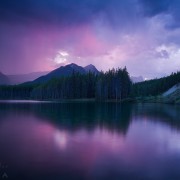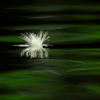How to make your Landscape Photography emotionally engaging
As a landscape photographer, you probably already have an emotional connection to nature. But, how do you invoke emotion and convey the love, sense of awe, and that take-your-breath away beauty within the confines of a four-sided frame? How do you create images that are more emotionally engaging? Here are few ideas for creating emotionally engaging landscape photography:
1. Get intimate with your subject.
Observe your own emotions in the scene. Whatever emotion you feel toward your subject will be reflected in your photographs. Before you decide to take out your camera, observe how the landscape is affecting your emotions. Do you feel at peace in the scene? Is it dark and moody? Are you in awe of the magnificence of nature? Does the scene feel expansive and give you a feeling of insignificance? Or is it intimate, like you are the first person to ever see this moment in time?
In landscape photography, if you can find an element that causes you to respond emotionally to the scene, then your photographs will have a better chance of communicating that emotion, In addition, your viewers will feel more engaged with your work.

“Bones and Stones” — I made this photograph near Escalante, Utah. At the time, I was suffering from a brief but serious illness. My state of mind was clearly reflected in how I interpreted the scene.
2. Understand all the moods of your subject.
If you want your audience to relate to your landscape photographs, then you need to first understand your subject. If you have a favorite place you like to photograph, go there again and again. Study the lighting, the weather patterns, and the seasons. Practice your craft under the same conditions and see how the subject changes over time and conditions.

“Rebirth” — Yosemite National Park is my favorite stomping ground. I go there all times of the year, in all conditions. After a long dry spell, California finally received much needed rain, which gave birth to seasonal waterfalls that hadn’t flowed in years. It was a rare sight. I intentionally went there to see and photograph this event.
3. Be original.
Originality can be difficult to achieve in landscape photography, especially when you are first learning your craft. Imitating other photographers whom you admire is a great way to study a method, but it will not set your work apart. With practice, you will naturally bring your own unique impressions to your photographs, even if you are photographing the same subject as your peers.

“Home of the Dogwood” — I spend a lot of time in Yosemite National Park, along with many other photographers. I ask myself, “What can I add to this rich visual conversation that hasn’t already been said better — or thousands of times — before?” I don’t try to recreate what Ansel Adams did, although his work has certainly inspired me. However, I do endeavor to communicate something in my photographs that may have been missed by the casual observer or that moves me personally.
4. Study composition.
As photographers, we can either subliminally or intentionally create compositions that are emotionally provocative. So, study photography composition and understand why it is important to use purposefully.
- Horizontal lines create a sense of serenity because objects parallel to the Earth are at rest.
- Vertical lines create a sense of power, strength, and stature because they reach to the sky.
- Diagonal lines create movement and energy because they are either about to fall or are already in motion.
- Curvy lines suggest comfort and ease. They recall the lines of the human body and have a pleasing, sensual quality.
- Symmetry conveys a sense of stability.
5. Observe how color makes you feel.
People respond to color based on their gender, cultural background, and personal experiences. How do certain colors make you feel? Do certain colors invoke emotion? Trust those emotions and work them into your photographs to tell a larger story. This is a deep subject, but in Western cultures, here are a few “rules” to consider.
- Cool colors are considered restful.
- Warm colors are considered high energy and can create a restless feeling.
- The color white stands for purity.
- Darker colors are somber.
I’ve written more about the subject of color on the Visual Wilderness blog, broken into three parts: Primary Colors, Secondary Colors, and the rest of the color wheel.
6. Understand the power of symbology.
Classic works of art drip with symbology. The masters understood how to tap into the collective unconsciousness to stir and invoke emotions. You can bring deeper meaning to your work by training your eye to look for symbolic shapes in nature and working them into your compositions. Here are some examples.
- Triangles suggest male/female energy.
- An inverted triangle creates a sense of imbalance and tension.
- Circles are often seen as protective symbols.
- A cross, aside from its powerful Christian symbology, also represents the four elements of the physical universe: earth, water, fire, and air.

“Mother” — A Black Oak, with branches splayed back, as if protecting her young. A strong triangle shape in the granite above counters the female energy of the tree.
These steps may seem like a lot to think about when you are simply trying to take landscape photography images, so I recommend baby steps. Pick just one of these ideas and work it into your practice, then see if you can notice a difference in the quality of your work. Over time, you won’t need to think about composition or color. It will come naturally!











